Did the US Government’s Nuclear Testing Lead the Cast and Crew of ‘The Conqueror’ to Develop Cancer?
John Wayne was one the most famous stars of Vintage Hollywood, but even he chose roles in movies that wound up being panned by critics. Among them was the 1956 historical epic, The Conqueror, which is widely considered to be one of the worst films ever made. Production largely occurred downwind of the Nevada Test Site, which many believe is the reason why just under half of the cast and crew developed cancer during their lifetimes.
The Conqueror (1956)
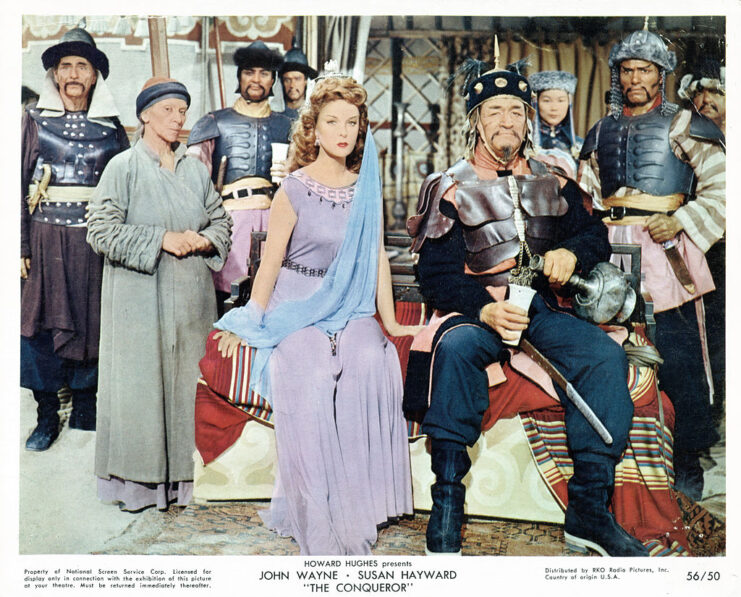
The Conqueror was essentially doomed before production ever began. Originally slated to star Marlon Brando as Genghis Khan, the actor later backed out, leading John Wayne to be cast in the role. This didn’t happen by accident – the Western star had fought for the part. This would be a misstep on the part of Wayne and the film’s producers, with critics saying the role had been miscast.
The film centers around the love story between Khan and Bortai, a princess taken captive by the Mongol leader. Susan Hayward, Agnes Moorehead and Petro Armendáriz starred alongside Wayne. While big names in their own right, they failed to help the movie’s overall premise succeed.
A critical flop that was dubbed one of the worst movies of 1956, The Conqueror only brought in $4.5 million at the North American box office – just half of its $9 million budget.
Filming downwind of the Nevada Test Site
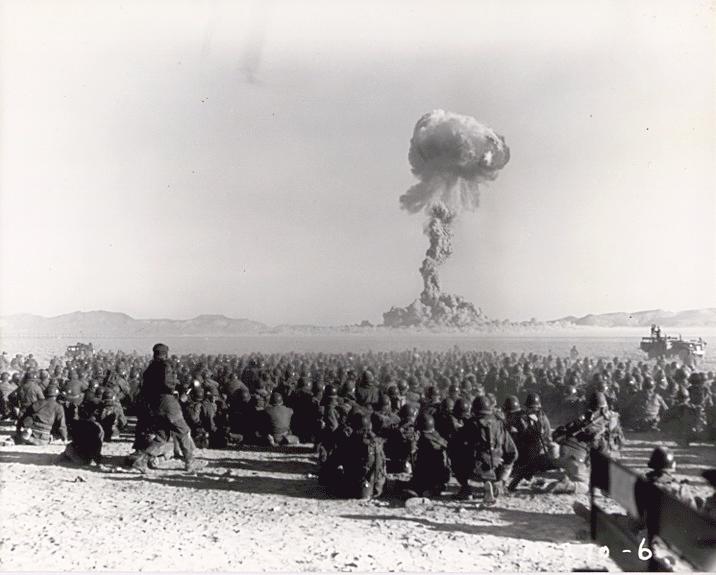
The Conqueror was primarily filmed in Utah, which is why speculation regarding the number of cancer cases within the cast and crew has come about. Exterior shots were filmed in the Escalante Desert and Snow Canyon, the latter of which experienced high nuclear radiation and fallout from tests conducted at the Nevada Test Site. On top of this, 60 tons of dirt from the area was also transported back to a film studio in Hollywood, to ensure continuity between sets.
The 1,360-square-mile Nevada Test Site was established in 1951, and over the decades saw more than 1,000 aboveground nuclear detonations take place, with 828 more conducted underground. In the year before production began for The Conqueror, 11 tests occurred as part of Operation Upshot-Knothole. Despite this, the US government assured both the crew and nearby residents that there was no risk to their health and safety.
The ill-effects of being downwind of a nuclear blast
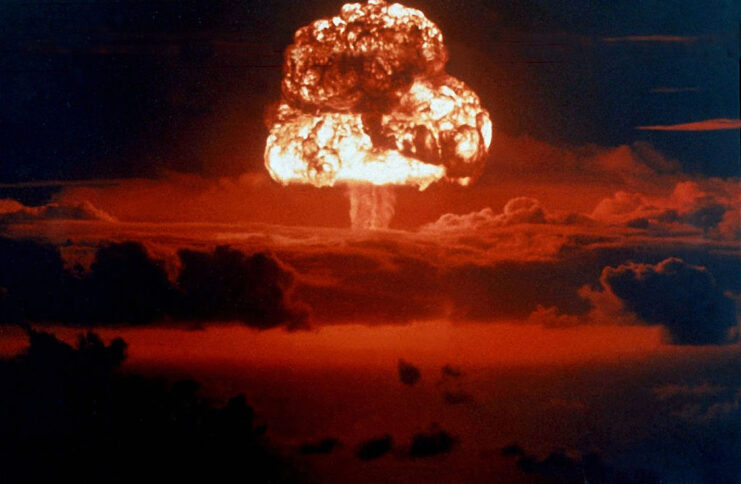
Despite the US government assuring there wasn’t a threat of nuclear contamination in settled areas near the Nevada Test Site, it’s since been proven that this actually wasn’t the case, especially in southern Utah. Winds carried the fallout to the area, leading to residents being nicknamed “downwinders.”
Downwinders were anyone who resided between the Rocky and Cascade Mountains – Arizona, Utah, Idaho, Nevada, New Mexico, Washington and Oregon – during the Cold War and were exposed to nuclear fallout from the trials being conducted at the Nevada Test Site. Along with being exposed to it through the air, they also came into contact with it via the food chain and groundwater systems.
At the time, the lasting effects of exposure to nuclear fallout weren’t well known. It wasn’t until people started being diagnosed with cancer, congenital malformations and thyroid diseases that the link was found. This led US President George H.W. Bush to sign into law the Radiation Exposure Compensation Act in October 1990, which gave those impacted between $50,000 and $100,000.
Increased cancer cases among those involved in The Conqueror
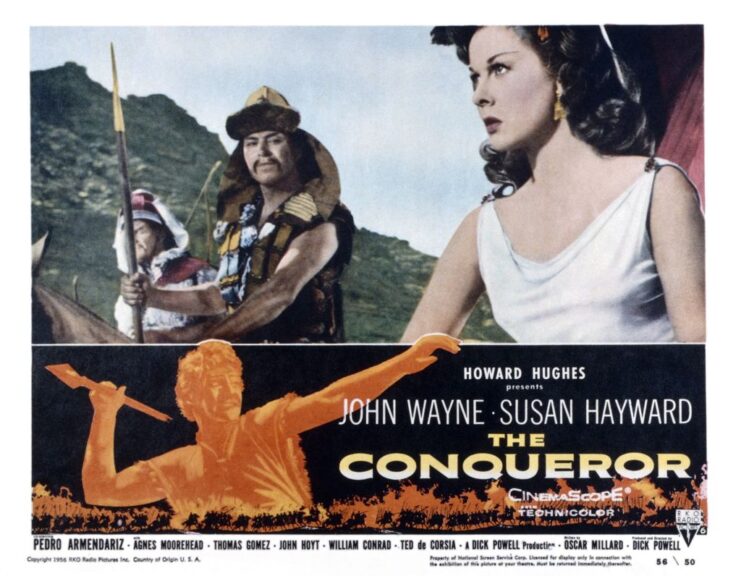
In 1980, PEOPLE Magazine reported that, of the 220 individuals involved in The Conqueror, 91 had developed cancer at some point in their life. Of that total, 46 died as a result. This included the film’s biggest names: John Wayne, Lee Van Cleef, Susan Hayward and Agnes Moorehead. Hayward, in particular, developed four different types during her lifetime. Petro Armendáriz took his own life after finding out he had terminal cancer, and director Richard Powell died from Lymphoma.
On top of this, relatives who visited the set of The Conqueror also had their own cancer scares. Wayne’s son, Patrick, had to have a benign tumor removed from his breast, while the actor’s other son, Michael, developed skin cancer. Hayward’s son, Tim Barker, also had a benign tumor removed from his mouth.
While the amount of individuals on the set of The Conqueror who developed cancer isn’t more than the American average, the fact the majority of them were diagnosed at rather young ages is. This is why many believe there’s a connection to the nuclear fallout produced by the US government’s trials at the Nevada Test Site.
The belief was supported by then-University of Utah Professor Robert Pendleton, who told PEOPLE, “With these numbers, this case could qualify as an epidemic. The connection between fallout radiation and cancer in individual cases has been practically impossible to prove conclusively. But in a group this size you’d expect only 30-some cancers to develop. With 91 cancer cases, I think the tie-in to their exposure on the set of The Conqueror would hold up in a court of law.”
Could other factors have caused the cancer cases?
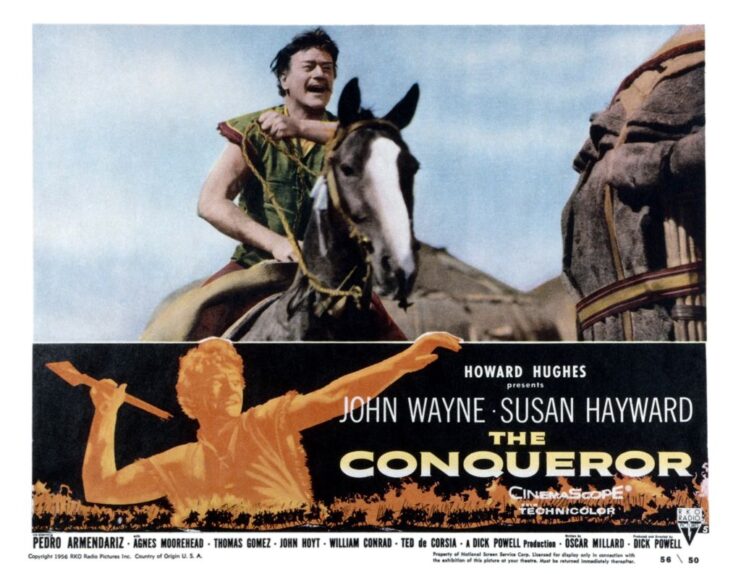
While this information is enough to convince some that the production of The Conqueror led those involved to develop cancer, there are others who believe there’s other factors at play. For example, John Wayne was known to have a habit of smoking six packs of cigarettes a day. In fact, the majority of the cast and crew were heavy smokers.
Given the correlation between the carcinogens in cigarettes and cancer, this has led many to presume that this is what caused the high rates of the disease. There are some who counter, however, citing Agnes Moorehood. Despite being a non-smoker, abstaining from alcohol and putting an emphasis on her overall health, she still developed uterine cancer.
More from us: ‘The Longest Day’ Is Among the Most Accurate D-Day Films Ever Released
Despite this, there’s one person who’s reported to have believed there was a correlation between The Conqueror and the amount of cancer cases. Producer Howard Hughes is said to have been so wracked with guilt that he spent $12 million to purchase every available copy of the film, so it was no longer available, and watched it nightly until his death in 1976.
The post Did the US Government’s Nuclear Testing Lead the Cast and Crew of ‘The Conqueror’ to Develop Cancer? appeared first on warhistoryonline.
Post a Comment
0 Comments